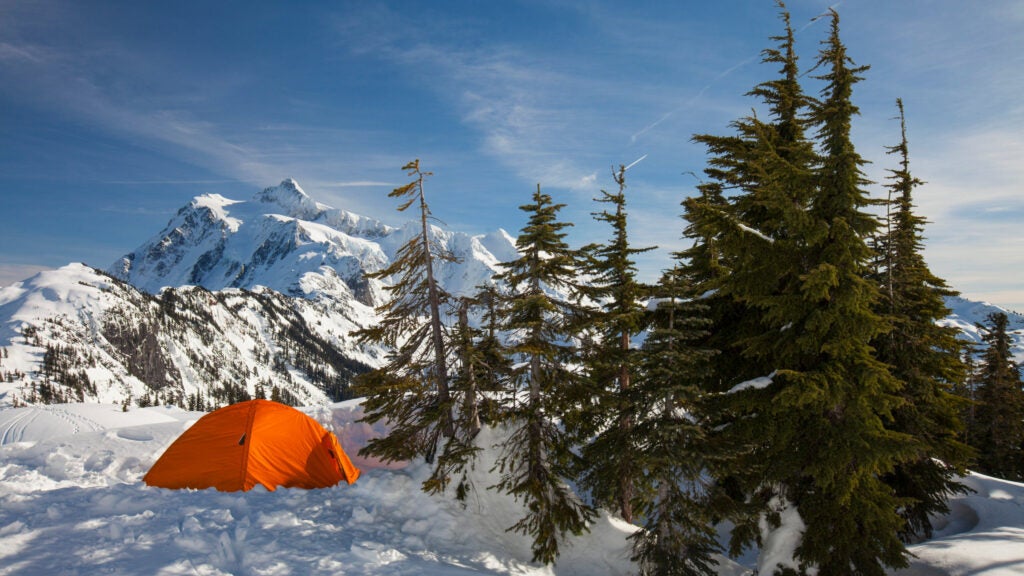Products You May Like
Heading out the door? Read this article on the new Outside+ app available now on iOS devices for members!
Download the app.
Truth: It may be spring, but winter camping season isn’t over yet. The western and northern United States is still seeing record snowfall, meaning that if you want to get out on the trail early, you need to be ready for the chill. If you’re not ready for it, heavy precip and wind can topple tents (or at least blow them around enough to make a good night’s sleep impossible. Instead, come prepared with these simple, expert tips to help you get your shelter ready for the snow. —The Editors
Pad your schedule
“In the cold, everything takes considerably more time and energy—setting up your tent, rigging guylines, melting snow,” says polar explorer Eric Larsen. “You’ll be amazed at how these tasks drag on, so plan accordingly.”
Site your tent wisely
You want a location sheltered from the wind and next to trees or rock faces, which absorb the sun’s warmth, then release it at night. Also, “Look for sites near drifts of compacted snow,” Larsen says. “It makes cutting blocks for snow walls much easier.”
Build a foundation
Use your skis, snowshoes, or a shovel to stamp out a flat tent platform. In the vestibule, dig a pit for your feet so you can easily take your boots on and off.
Use every guy point
“The more you connect your tent to the snow, the more rock solid it becomes,” says Mike Finnegan, a Mt. Washington meteorologist. Use snowstakes (like Dutchware’s Titanium UL Sand/Snow Anchors, $12.50 each); or tie the lines around rocks or logs, then bury them under two feet of snow. And consider bringing a small mallet to hammer stakes into hardpack.
Pile snow around the base of the tent
It should form a small wall about three to six inches high and should touch the tent. “This will block gaps between the tent and fly and prevent snow from blowing in,” explains Larsen.
Build a snow wall
If you’re staying in one location for several days or expect seriously bad weather, create a protective snow barrier by carving out (with a shovel or ski) cinderblock-size chunks of snow and stacking them. The wall should be three feet high and extend two feet past the tent on either side to prevent the area around the tent from getting choked with spindrift.
Close all tent zips
“And secure all Velcro tabs or snaps on your tent door before sleeping,” Finnegan suggests. “If condensation might become an issue, leave a small section of the door unzipped at the top to let out humid air.”
Lesson: Learn how your tent works
“During a blizzard in Banff National Park, my tentmate and I woke up to find a half-inch of snow all over our sleeping bags, faces, and gear. While we slept, it had blown through the vents on our tent and coated everything. We shook off our gear and swept out the tent, but the wind kept sneaking more flakes through the flaps that covered the vents, and we couldn’t figure out how to hold them closed. We ended up spending the next night squeezed in with the rest of our party in their tents. It wasn’t until two days later that one of our guides realized that we had somehow missed the zipper closure on the flap. Lesson learned: We could have saved ourselves a lot of trouble if we had set up our shelter in advance.” —Adam Roy, Executive Editor
Originally published October 2010; last updated March 2023
